- Egypt Tour Magic
- Egypt Tour Packages
- Excursions in Egypt
- Cairo Tours and Excursions
- Hurghada Tours and Excursions
- Soma Bay Tours and Excursions
- Makadi Bay Tours and Excursions
- Sahl Hasheesh Tours and Excursions
- El Gouna Tours and Excursions
- Marsa Alam Tours and Excursions
- Port Ghalib Tours and Excursions
- El Quseir Tours and Excursions
- Dendera and Abydos Day Tours
- Aswan Tours and Excursions
- Luxor Tours and Excursions
- Alexandria Tours and Excursions
- Sharm El Sheikh Tours and Excursions
- Top Rated Tours in 2025
- Optional Excursions in Egypt
- Private Transfer
- Blogs About egypt
- Ancient Egypt
- What You Need To know Before Your First Trip To Egypt
- Best Places to Visit in Egypt 2025
- Top Attractions in Red Sea Resorts 2025
- Top 10 Tourist Activities in Egypt
- Top 30 Activities You Can’t Miss in Egypt
- The Guide to Guided Tours in Egypt
- Egypt’s Ancient and Modern History
- The Nile River
- The Deserts of Egypt
- Historical Sites in Egypt
- Cairo
- Alexandria
- Luxor
- Aswan
- The Red Sea
- Dendera Temple
- El Fayoum Oasis
- Bahariya Oasis
- Siwa Oasis
- Al Alamein
- Marsa Matruh
- Ancient Egyptian gods
- famous Egyptian dishes
- UNESCO World Heritage sites
- About Us
- Why Egypt Tour Magic
- Egypt Tour Magic
- Egypt Tour Packages
- Excursions in Egypt
- Cairo Tours and Excursions
- Hurghada Tours and Excursions
- Soma Bay Tours and Excursions
- Makadi Bay Tours and Excursions
- Sahl Hasheesh Tours and Excursions
- El Gouna Tours and Excursions
- Marsa Alam Tours and Excursions
- Port Ghalib Tours and Excursions
- El Quseir Tours and Excursions
- Dendera and Abydos Day Tours
- Aswan Tours and Excursions
- Luxor Tours and Excursions
- Alexandria Tours and Excursions
- Sharm El Sheikh Tours and Excursions
- Top Rated Tours in 2025
- Optional Excursions in Egypt
- Private Transfer
- Blogs About egypt
- Ancient Egypt
- What You Need To know Before Your First Trip To Egypt
- Best Places to Visit in Egypt 2025
- Top Attractions in Red Sea Resorts 2025
- Top 10 Tourist Activities in Egypt
- Top 30 Activities You Can’t Miss in Egypt
- The Guide to Guided Tours in Egypt
- Egypt’s Ancient and Modern History
- The Nile River
- The Deserts of Egypt
- Historical Sites in Egypt
- Cairo
- Alexandria
- Luxor
- Aswan
- The Red Sea
- Dendera Temple
- El Fayoum Oasis
- Bahariya Oasis
- Siwa Oasis
- Al Alamein
- Marsa Matruh
- Ancient Egyptian gods
- famous Egyptian dishes
- UNESCO World Heritage sites
- About Us
- Why Egypt Tour Magic
Exploring Islamic Cairo: A Journey Through Centuries of History and Culture
Islamic Cairo, also known as Cairo’s Islamic District, is a UNESCO World Heritage Site filled with vibrant streets, stunning architecture, and rich history. This area dates back to the Islamic Golden Age, and it’s home to an impressive collection of mosques, madrasas, and monuments that span over a thousand years of Islamic history. Whether you’re a history enthusiast, a lover of architecture, or simply curious about Egyptian culture, exploring Islamic Cairo offers an enriching journey through one of the most iconic historical neighborhoods in the world.
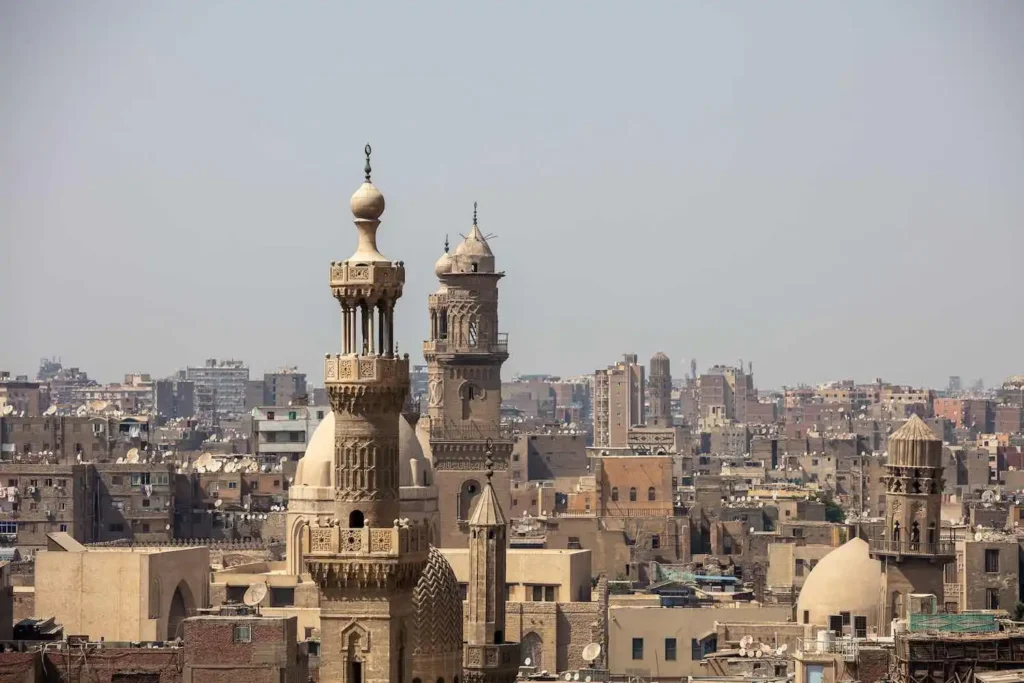
The History of Islamic Cairo
Islamic Cairo is a living testament to Egypt’s role as a prominent center of Islamic culture and scholarship. The area developed from the founding of Fustat in 641 CE by the Arabs, making it one of the earliest Islamic cities in Egypt. As Cairo grew over the centuries, so did its importance as a center of politics, culture, and religion in the Islamic world. It served as the seat of the Fatimid Caliphate, the Ayyubid dynasty, and the Mamluk Sultanate, leaving behind an incredible array of architectural wonders and landmarks. The streets of Islamic Cairo are a vibrant mix of old and new, where centuries-old monuments coexist with bustling markets and modern life. A walking tour of this area will take you through the evolution of Cairo’s history, from its Islamic origins to its current role as one of the most important cities in the Arab world. Exploring this area offers a fascinating look at the cultural and political shifts that have shaped Egypt and the broader region.
The Great Mosques of Islamic Cairo
One of the main attractions in Islamic Cairo is its stunning mosques, each with unique architectural styles, historical significance, and intricate designs. The Sultan Hassan Mosque is a standout example of Mamluk architecture and is considered one of the most magnificent mosques in Cairo. Built in the 14th century, it features a grand courtyard, soaring minarets, and intricate carvings that reflect the religious devotion and artistic skill of the time. Just nearby is the Rifai Mosque, another example of exquisite craftsmanship with its grand dome and minarets. The Al-Azhar Mosque, founded in 970 CE, is one of the oldest universities in the world and remains a center of Islamic learning to this day. It’s not only a mosque but also an intellectual hub that has shaped Islamic scholarship for centuries. The mosque’s stunning interiors, with their intricate calligraphy and architectural elegance, are awe-inspiring. As you explore these mosques, you’ll learn about the profound religious and intellectual traditions that have been at the heart of Islamic Cairo for centuries. Each mosque tells its own story, and together, they create a rich tapestry of history and culture.
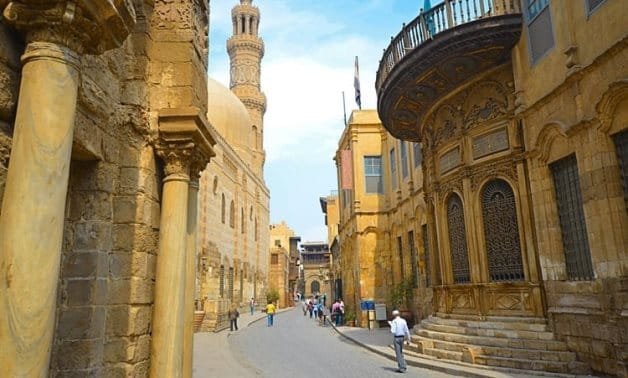
The Vibrant Souks and Markets of Islamic Cairo
No visit to Islamic Cairo is complete without exploring its lively souks (markets). The Khan el-Khalili Bazaar, a sprawling labyrinth of narrow alleys, is one of the most famous and vibrant markets in Cairo. Dating back to the 14th century, this market has been a hub of trade and commerce for centuries, offering everything from traditional spices and perfumes to handmade jewelry, textiles, and souvenirs. The sights, sounds, and smells of the bazaar evoke the spirit of Cairo’s past, where merchants once traded in goods from across the Islamic world. Walking through the bustling market streets is an immersive experience that allows visitors to witness the pulse of Cairo’s daily life. As you stroll through the souks, you’ll encounter a diverse mix of locals and tourists, all bargaining for goods and enjoying the rich atmosphere of the market. Many of the shops have been passed down through generations, offering crafts and products that reflect Cairo’s deep cultural heritage. The souks are an essential part of the Islamic Cairo experience, giving visitors a taste of both the modern and the ancient aspects of Cairo’s rich history.
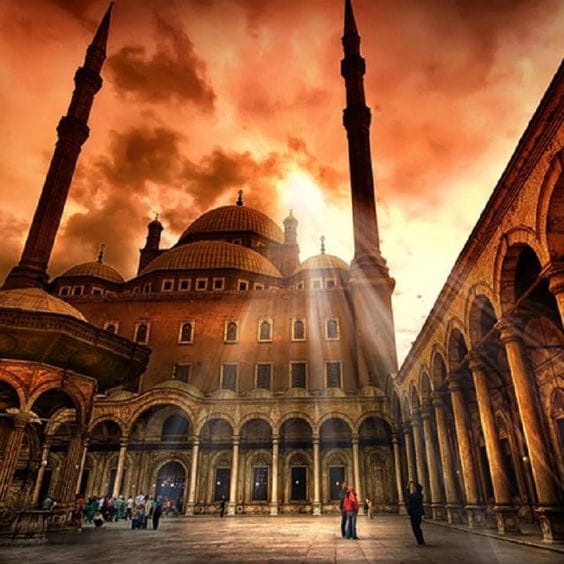
Historical Landmarks: The Citadel and the City Gates
The Cairo Citadel (also known as the Saladin Citadel) is one of the most prominent landmarks in Islamic Cairo, offering breathtaking views of the city. Built by the famous Sultan Saladin in the 12th century, the citadel served as the seat of power for several Islamic dynasties. Inside the citadel, visitors can explore historical sites such as the Mohammed Ali Mosque, a stunning example of Ottoman-style architecture with its towering minarets and grand domes. The mosque’s interior is just as awe-inspiring, featuring intricate mosaics, chandeliers, and elegant calligraphy. Another significant landmark in Islamic Cairo is the Bab Zuweila, one of the original gates to the city. Dating back to the 11th century, Bab Zuweila is one of the best-preserved city gates and offers an insight into Cairo’s defensive structures. Visitors can climb the towers of Bab Zuweila for panoramic views of the surrounding neighborhoods and Islamic Cairo itself. These historical landmarks, including the Citadel and city gates, provide a deeper understanding of Cairo’s military and political history and its role as the center of Islamic Egypt for centuries.
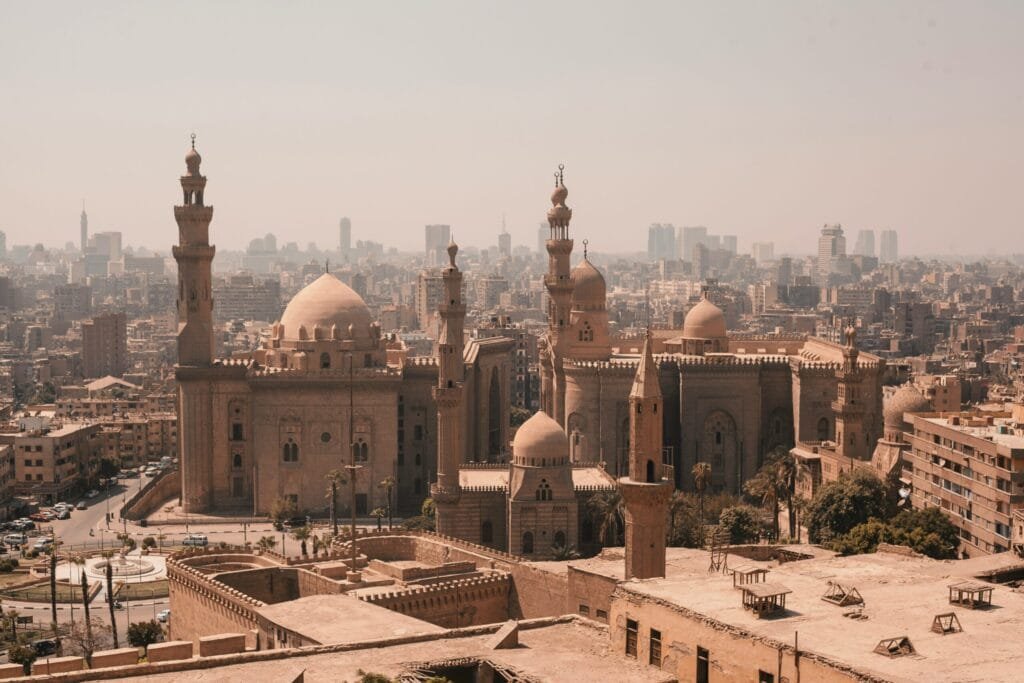
The Influence of Islamic Art and Architecture
The architecture of Islamic Cairo is one of the most striking aspects of its heritage. The blend of Islamic, Mamluk, Ottoman, and Fatimid styles is evident throughout the district, with beautiful decorations, intricate tile work, and soaring minarets. The Mosque of Ibn Tulun, one of the oldest mosques in Cairo, is another example of early Islamic architecture, featuring a large open courtyard, a unique minaret, and stunning brickwork. Visitors can also explore the Al-Muizz Street, a pedestrian-only street lined with Islamic buildings and structures from different periods, offering a visual journey through Cairo’s architectural evolution. Islamic Cairo's streets are an open-air museum of Islamic art, showcasing how design, functionality, and spirituality intertwine. The carvings, calligraphy, and geometric patterns on mosques, madrasas, and tombs speak to the artistic vision of the time. Whether it's the ornate decoration of the Sultan Hassan Mosque or the simple beauty of the Qalawun Complex, each building reflects the Islamic principle of beauty and faith coming together in architectural form. The preservation of these buildings helps maintain a living connection to the cultural and artistic traditions of the Islamic world, offering visitors a chance to step into a city that has been shaped by centuries of artistic and architectural evolution.
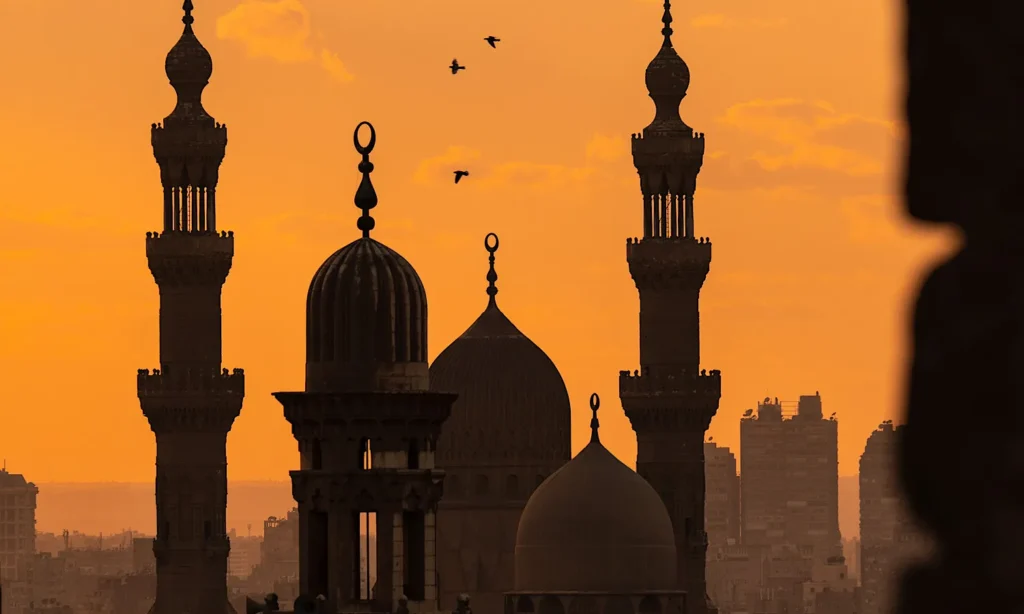
Cultural and Culinary Experience in Islamic Cairo
After a day of exploring the monuments and markets, no visit to Islamic Cairo is complete without indulging in its unique culinary offerings. The area is home to some of Cairo’s best traditional restaurants and street food vendors, where you can savor local dishes like koshari, falafel, and baklava. The Al-Hussein area, located near the famous Al-Hussein Mosque, is known for its traditional cafés where you can sip on mint tea or coffee while people-watching. Cultural experiences in Islamic Cairo also extend to the arts. The area hosts several galleries and cultural centers where visitors can witness traditional Islamic music, crafts, and dance. For those interested in the arts, the Egyptian Museum of Islamic Art offers a deeper dive into the history and craftsmanship of Islamic artifacts, including pottery, textiles, and manuscripts. Combining history, culture, and cuisine, Islamic Cairo offers an immersive experience that connects visitors to the heart of Egypt’s Islamic heritage.


